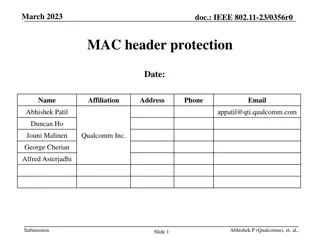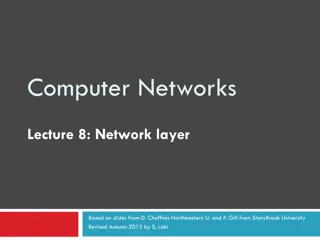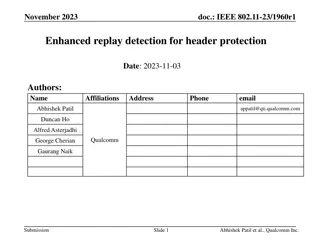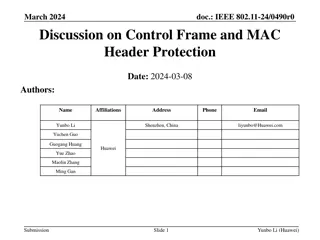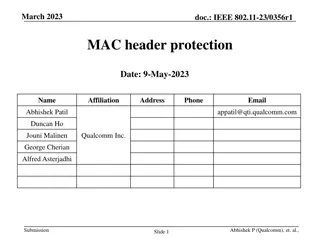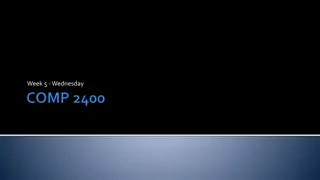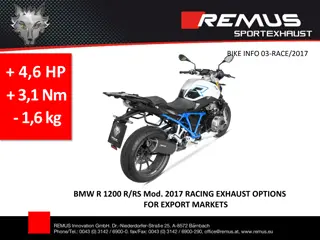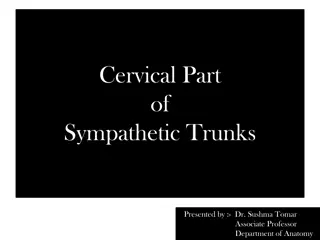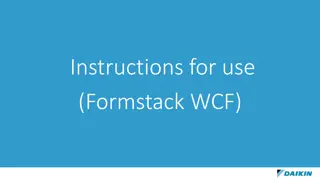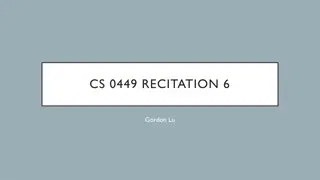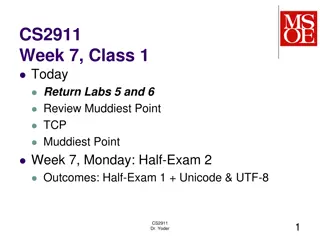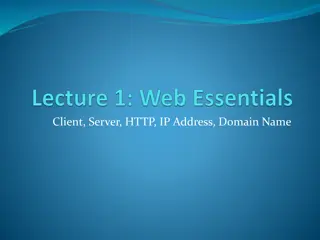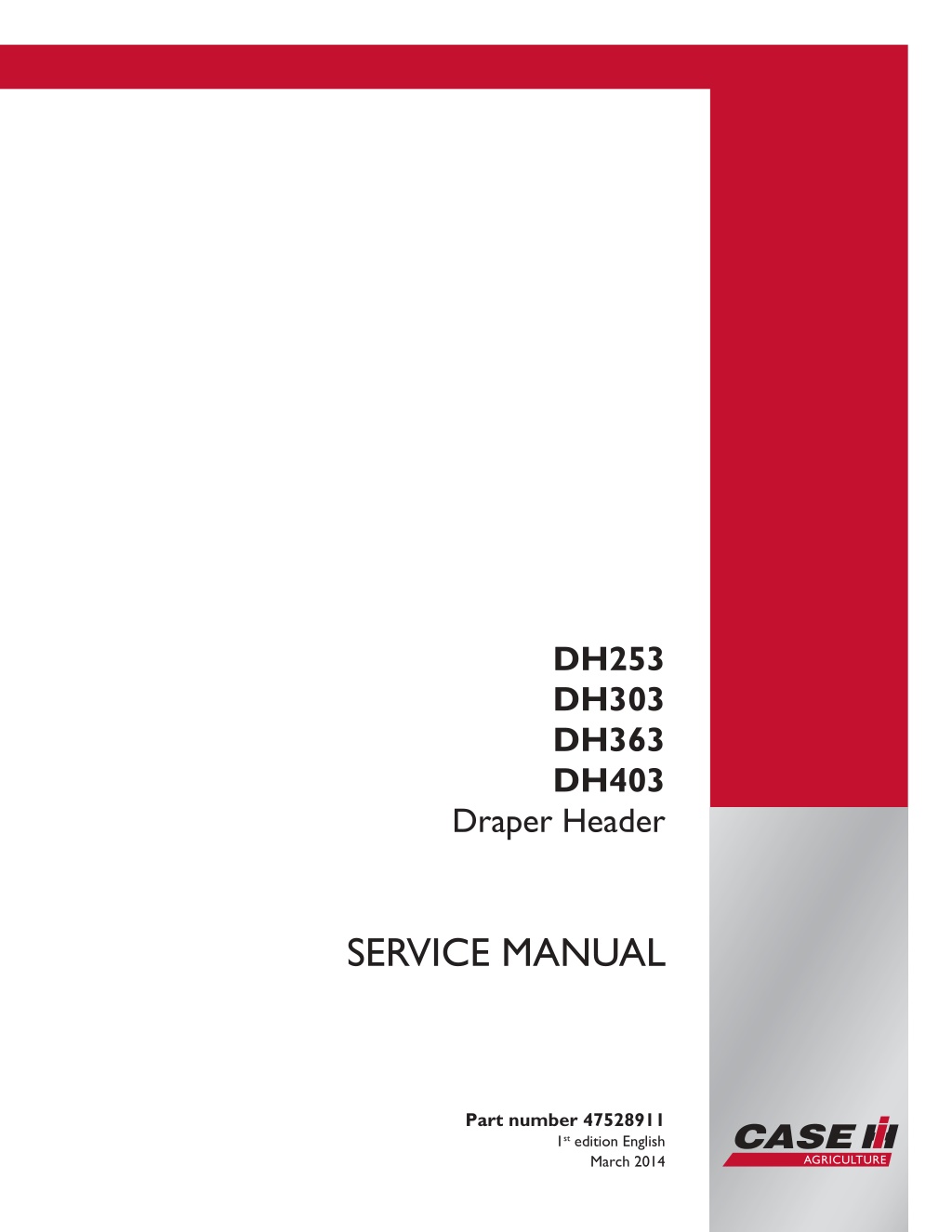
CASE IH DH253 DH303 DH363 DH403 Draper Header Service Repair Manual Instant Download (Part Number 47528911)
Please open the website below to get the complete manualnn//
Download Presentation

Please find below an Image/Link to download the presentation.
The content on the website is provided AS IS for your information and personal use only. It may not be sold, licensed, or shared on other websites without obtaining consent from the author. Download presentation by click this link. If you encounter any issues during the download, it is possible that the publisher has removed the file from their server.
E N D
Presentation Transcript
DH253 DH303 DH363 DH403 Draper Header SERVICE MANUAL Printed in U.S.A. Part number 47528911 1st edition English Copyright 2014 CNH Industrial America LLC. All Rights Reserved. Case IH is a registered trademark of CNH Industrial America LLC. March 2014 Racine Wisconsin 53404 U.S.A.
Contents INTRODUCTION Hydraulic systems....................................................................... 35 [35.000] Hydraulic systems.................................................................. 35.1 [35.518] Reel control system ................................................................ 35.2 [35.780] Feeder engagement system ....................................................... 35.3 [35.565] Cutter control circuit................................................................ 35.4 [35.910] Head and header hydraulic drive .................................................. 35.5 Electrical systems....................................................................... 55 [55.000] Electrical system ................................................................... 55.1 [55.100] Harnesses and connectors......................................................... 55.2 [55.404] External lighting .................................................................... 55.3 [55.675] Reel speed and position control.................................................... 55.4 [55.421] Feeding control system ............................................................ 55.5 [55.820] Chopping and cutting control systems ............................................. 55.6 Attachments/Headers.................................................................. 58 [58.101] Attachment/Header reel............................................................ 58.1 [58.110] Attachment/Header cutting mechanism ............................................ 58.2 [58.900] Belt feeding ........................................................................ 58.3 47528911 14/03/2014
INTRODUCTION 47528911 14/03/2014 1
https://www.ebooklibonline.com Hello dear friend! Thank you very much for reading. Enter the link into your browser. The full manual is available for immediate download. https://www.ebooklibonline.com
Contents INTRODUCTION Foreword - Important notice regarding equipment servicing ....................................3 Safety rules .....................................................................................4 Safety rules .....................................................................................5 Safety rules - Ecology and the environment .................................................. 11 Torque - Minimum tightening torques for normal assembly ................................... 12 Torque Standard torque data for hydraulics .................................................. 17 Basic instructions - Shop and assembly ...................................................... 19 General specification ......................................................................... 21 General specification ......................................................................... 23 Product identification .......................................................................... 24 Product identification - Machine orientation .................................................. 25 47528911 14/03/2014 2
INTRODUCTION Foreword - Important notice regarding equipment servicing All repair and maintenance work listed in this manual must be carried out only by qualified dealership personnel, strictly complying with the instructions given, and using, whenever possible, the special tools. Anyone who performs repair and maintenance operations without complying with the procedures provided herein shall be responsible for any subsequent damages. The manufacturer and all the organizations of its distribution chain, including - without limitation - national, regional, or local dealers, reject any responsibility for damages caused by parts and/or components not approved by the manu- facturer, including those used for the servicing or repair of the product manufactured or marketed by the manufacturer. In any case, no warranty is given or attributed on the product manufactured or marketed by the manufacturer in case of damages caused by parts and/or components not approved by the manufacturer. The information in this manual is up-to-date at the date of the publication. It is the policy of the manufacturer for continuous improvement. Some information could not be updated due to modifications of a technical or commercial type, or changes to the laws and regulations of different countries. In case of questions, refer to your CASE IH Sales and Service Networks. 47528911 14/03/2014 3
INTRODUCTION Safety rules Personal safety This is the safety alert symbol. It is used to alert you to potential personal injury hazards. Obey all safety messages that follow this symbol to avoid possible death or injury. Throughout this manual you will find the signal words DANGER, WARNING, and CAUTION followed by special in- structions. These precautions are intended for the personal safety of you and those working with you. Read and understand all the safety messages in this manual before you operate or service the machine. DANGER indicates a hazardous situation that, if not avoided, will result in death or serious injury. WARNING indicates a hazardous situation that, if not avoided, could result in death or serious injury. CAUTION indicates a hazardous situation that, if not avoided, could result in minor or moderate injury. FAILURE TO FOLLOW DANGER, WARNING, AND CAUTION MESSAGES COULD RESULT IN DEATH OR SERIOUS INJURY. Machine safety NOTICE: Notice indicates a situation that, if not avoided, could result in machine or property damage. Throughout this manual you will find the signal word Notice followed by special instructions to prevent machine or property damage. The word Notice is used to address practices not related to personal safety. Information NOTE: Note indicates additional information that clarifies steps, procedures, or other information in this manual. Throughout this manual you will find the word Note followed by additional information about a step, procedure, or other information in the manual. The word Note is not intended to address personal safety or property damage. 47528911 14/03/2014 4
INTRODUCTION Safety rules General safety rules Use caution when you operate the machine on slopes. Raised equipment, full tanks and other loads will change the center of gravity of the machine. The machine can tip or roll over when near ditches and embankments or uneven surfaces. Never operate the machine under the influence of alcohol or drugs, or while you are otherwise impaired. Hydraulic oil or diesel fuel leaking under pressure can penetrate the skin, causing serious injury or infection. DO NOT use your hand to check for leaks. Use a piece of cardboard or paper. Stop the engine, remove the key, and relieve the pressure before you connect or disconnect fluid lines. Make sure that all components are in good condition. Tighten all connections before you start the engine or pres- surize the system. If hydraulic fluid or diesel fuel penetrates the skin, seek medical attention immediately. Continuous long term contact with hydraulic fluid may cause skin cancer. Avoid long term contact and wash the skin promptly with soap and water. Keep clear of moving parts. Loose clothing, jewelry, watches, long hair, and other loose or hanging items can become entangled in moving parts. Wear protective equipment when appropriate. DO NOT attempt to remove material from any part of the machine while it is being operated or while components are in motion. Make sure that all guards and shields are in good condition and properly installed before you operate the machine. Never operate the machine with shields removed. Always close access doors or panels before you operate the ma- chine. Dirty or slippery steps, ladders, walkways, and platforms can cause falls. Make sure these surfaces remain clean and clear of debris. A person or pet within the operating area of a machine can be struck or crushed by the machine or its equipment. DO NOT allow anyone to enter the work area. Raised equipment and/or loads can fall unexpectedly and crush persons underneath. Never allow anyone to enter the area underneath raised equipment during operation. 47528911 14/03/2014 5
INTRODUCTION Before you leave the machine: 1. Park the machine on a firm, level surface. 2. Put all controls in neutral or park lock position. 3. Engage the parking brake. Use wheel chocks if required. 4. Lower all hydraulic equipment Implements, header, etc. 5. Turn off the engine and remove the key. When, due to exceptional circumstances, you would decide to keep the engine running after you leave the operator s station, then you must follow these precautions: 1. Bring the engine to low idle speed. 2. Disengage all drive systems. WARNING Some components may continue to run down after disengaging drive systems. Make sure all drive systems are fully disengaged. Failure to comply could result in death or serious injury. 3. W0113A Shift the transmission into neutral. 4. Apply the parking brake. General maintenance safety Keep the area used for servicing the machine clean and dry. Clean up spilled fluids. Service the machine on a firm, level surface. Install guards and shields after you service the machine. Close all access doors and install all panels after servicing the machine. Do not attempt to clean, lubricate, clear obstructions, or make adjustments to the machine while it is in motion or while the engine is running. Always make sure that working area is clear of tools, parts, other persons and pets before you start operating the machine. Unsupported hydraulic cylinders can lose pressure and drop the equipment, causing a crushing hazard. Do not leave equipment in a raised position while parked or during service, unless the equipment is securely supported. Jack or lift the machine only at jack or lift points indicated in this manual. Stop the engine, remove the key, and relieve pressure before you connect or disconnect fluid lines. Stop the engine and remove the key before you connect or disconnect electrical connections. Replace damaged or worn tubes, hoses, electrical wiring, etc. The engine, transmission, exhaust components, and hydraulic lines may become hot during operation. Take care when you service such components. Allow surfaces to cool before you handle or disconnect hot components. Wear protective equipment when appropriate. When welding, follow the instructions in the manual. Always disconnect the battery before you weld on the machine. Always wash your hands after you handle battery components. Wheels and tires Make sure that tires are correctly inflated. Do not exceed any recommended load or pressure. Follow the instructions in the manual for proper tire inflation. 47528911 14/03/2014 6
INTRODUCTION Tires are heavy. Handling tires without proper equipment could cause death or serious injury. Never weld on a wheel with a tire installed. Always remove the tire completely from the wheel prior to welding. Always have a qualified tire technician service the tires and wheels. If a tire has lost all pressure, take the tire and wheel to a tire shop or your dealer for service. Explosive separation of the tire can cause serious injury. DO NOT weld to a wheel or rim until the tire is completely removed. Inflated tires can generate a gas mixture with the air that can be ignited by high temperatures from welding procedures performed on the wheel or rim. Removing the air or loosening the tire on the rim (breaking the bead) will NOT eliminate the hazard. This condition can exist whether tires are inflated or deflated. The tire MUST be completely removed from the wheel or rim prior to welding the wheel or rim. Driving on public roads and general transportation safety Comply with local laws and regulations. Use appropriate lighting to meet local regulations. Make sure that the SMV emblem is visible. Use safety chains for trailed equipment when safety chains are provided with machine or equipment. Lift implements and attachments high enough above ground to prevent accidental contact with road. When you transport equipment or a machine on a transport trailer, make sure that it is properly secured. Be sure the SMV on the equipment or machine is covered while being transported on a trailer. Be aware of overhead structures or power lines and make sure that the machine and/or attachments can pass safely under. Travel speed should be such that you maintain complete control and machine stability at all times. Slow down and signal before turning. Pull over to allow faster traffic to pass. Follow correct towing procedure for equipment with or without brakes. Fire and explosion prevention Fuel or oil that is leaked or spilled on hot surfaces or electrical components can cause a fire. Crop materials, trash, debris, bird nests, or flammable material can ignite on hot surfaces. Always have a fire extinguisher on or near the machine. Make sure that the fire extinguisher(s) is maintained and serviced according to the manufacturer s instructions. At least once each day and at the end of the day, remove all trash and debris from the machine especially around hot components such as the engine, transmission, exhaust, battery, etc. More frequent cleaning of your machine may be necessary depending on the operating environment and conditions. At least once each day, remove debris accumulation around moving components such as bearings, pulleys, belts, gears, cleaning fans, etc. More frequent cleaning of your machine may be necessary depending on the operating environment and conditions. Inspect the electrical system for loose connections and frayed insulation. Repair or replace loose or damaged parts. Do not store oily rags or other flammable material on the machine. Do not weld or flame cut any items that contain flammable material. Clean items thoroughly with non-flammable solvents before welding or flame-cutting. 47528911 14/03/2014 7
INTRODUCTION Do not expose the machine to flames, burning brush, or explosives. Promptly investigate any unusual smells or odors that may occur during operation of the machine. Reflectors and warning lights You must use flashing amber warning lights when you operate equipment on public roads. 47528911 14/03/2014 8
INTRODUCTION Personal Protective Equipment (PPE) Wear Personal Protective Equipment (PPE) such as hard hat, eye protection, heavy gloves, hearing protection, pro- tective clothing, etc. Do Not Operate tag Before you start servicing the machine, attach a Do Not Operate warning tag to the machine in an area that will be visible. Hazardous chemicals If you are exposed to or come in contact with hazardous chemicals you can be seriously injured. The fluids, lubricants, paints, adhesives, coolant, etc. required for the function of your machine can be hazardous. They may be attractive and harmful to domestic animals as well as humans. Material Safety Data Sheets (MSDS) provide information about the chemical substances within a product, safe han- dling and storage procedures, first aid measures, and procedures to take in the event of a spill or accidental release. MSDS are available from your dealer. Before you service your machine check the MSDS for each lubricant, fluid, etc. used in this machine. This information indicates the associated risks and will help you service the machine safely. Follow the information in the MSDS, and on manufacturer containers, as well as the information in this manual, when you service the machine. Dispose of all fluids, filters, and containers in an environmentally safe manner according to local laws and regulations. Check with local environmental and recycling centers or your dealer for correct disposal information. Store fluids and filters in accordance with local laws and regulations. Use only appropriate containers for the storage of chemicals or petrochemical substances. Keep out of reach or children or other unauthorized persons. Applied chemicals require additional precautions. Obtain complete information from the manufacturer or distributor of the chemicals before you use them. Utility safety Make sure that the machine has sufficient clearance to pass in all directions. Pay special attention to overhead power lines and hanging obstacles. High voltage lines may require significant clearance for safety. Contact local authorities or utilities to obtain safe clearance distances from high voltage power lines. Retract raised or extended components, if necessary. Remove or lower radio antennas or other accessories. Should a contact between the machine and an electric power source occur, the following precautions must be taken: Stop the machine movement immediately. Apply the parking brake, stop the engine, and remove the key. Check if you can safely leave the cab or your actual position without contact with electrical wires. If not, stay in your position and call for help. If you can leave your position without touching lines, jump clear of the machine to make sure that you do not make contact with the ground and the machine at the same time. Do not permit anyone to touch the machine until power has been shut off to the power lines. Electrical storm safety Do not operate machine during an electrical storm. If you are on the ground during an electrical storm, stay away from machinery and equipment. Seek shelter in a permanent, protected structure. If an electrical storm should strike during operation, remain in the cab. Do not leave the cab or operator s platform. Do not make contact with the ground or objects outside the machine. 47528911 14/03/2014 9
INTRODUCTION Working at heights When the normal use and maintenance of the machine requires you to work at heights: Correctly use installed steps, ladders, and railings. Never use ladders, steps, or railings while the machine is moving. Do not stand on surfaces that are not designated as steps or platforms. Do not use the machine as a lift, ladder, or platform for working at heights. 47528911 14/03/2014 10
INTRODUCTION Safety rules - Ecology and the environment Soil, air, and water are vital factors of agriculture and life in general. When legislation does not yet rule the treatment of some of the substances required by advanced technology, sound judgment should govern the use and disposal of products of a chemical and petrochemical nature. NOTE: The following are recommendations that may be of assistance: Become acquainted with and ensure that you understand the relative legislation applicable to your country. Where no legislation exists, obtain information from suppliers of oils, filters, batteries, fuels, antifreeze, cleaning agents, etc., with regard to their effect on man and nature and how to safely store, use, and dispose of these substances. Agricultural consultants will, in many cases, be able to help you as well. Helpful hints Avoid filling tanks using cans or inappropriate pressurized fuel delivery systems that may cause considerable spillage. In general, avoid skin contact with all fuels, oils, acids, solvents, etc. Most of them contain substances that may be harmful to your health. Modern oils contain additives. Do not burn contaminated fuels and or waste oils in ordinary heating systems. Avoid spillage when draining off used engine coolant mixtures, engine, gearbox and hydraulic oils, brake fluids, etc. Do not mix drained brake fluids or fuels with lubricants. Store them safely until they can be disposed of in a proper way to comply with local legislation and available resources. Modern coolant mixtures, i.e. antifreeze and other additives, should be replaced every two years. They should not be allowed to get into the soil, but should be collected and disposed of properly. Do not open the air-conditioning system yourself. It contains gases that should not be released into the atmosphere. Your CASE IH dealer or air conditioning specialist has a special extractor for this purpose and will have to recharge the system properly. Repair any leaks or defects in the engine cooling or hydraulic system immediately. Do not increase the pressure in a pressurized circuit as this may lead to a component failure. Protect hoses during welding as penetrating weld splatter may burn a hole or weaken them, allowing the loss of oils, coolant, etc. 47528911 14/03/2014 11
INTRODUCTION Torque - Minimum tightening torques for normal assembly Metric non-flanged hardware Nom- inal size Lock nut class 8 with class 8.8 bolt Lock nut class 10 with class 10.9 bolt Class 8.8 bolt and class 8 nut Class 10.9 bolt and class 10 nut Plated with ZnCr 2.9 N m (26 lb in) 5.9 N m (52 lb in) 10 N m (89 lb in) 25 N m (217 lb in) 49 N m (36 lb ft) 85 N m (63 lb ft) 210 N m (155 lb ft) 425 N m (313 lb ft) 735 N m (500 lb ft) Plated with ZnCr 4.2 N m (37 lb in) 8.5 N m (75 lb in) 15 N m (128 lb in) 35 N m (311 lb in) 70 N m (51 lb ft) 121 N m (90 lb ft) 301 N m (222 lb ft) 587 N m (433 lb ft) 1016 N m (750 lb ft) Unplated Unplated 2.2 N m (19 lb in) 4.5 N m (40 lb in) 7.5 N m (66 lb in) 18 N m (163 lb in) 3.2 N m (28 lb in) 6.4 N m (57 lb in) 11 N m (96 lb in) 26 N m (234 lb in) 2 N m (18 lb in)2.9 N m (26 lb M4 in) 4 N m (36 lb in)5.8 N m (51 lb M5 in) 10 N m (89 lb in) 24 N m (212 lb in) 48 N m (35 lb ft) 83 N m (61 lb ft) 205 N m (151 lb ft) 400 N m (295 lb ft) 693 N m (510 lb ft) 6.8 N m (60 lb in) 17 N m (151 lb in) 33 N m (25 lb ft) 58 N m (43 lb ft) 143 N m (106 lb ft) 290 N m (214 lb ft) 501 N m (370 lb ft) M6 M8 37 N m (27 lb ft) 52 N m (38 lb ft) M10 64 N m (47 lb ft) 91 N m (67 lb ft) M12 158 N m (116 lb ft) 319 N m (235 lb ft) 551 N m (410 lb ft) 225 N m (166 lb ft) 440 N m (325 lb ft) 762 N m (560 lb ft) M16 M20 M24 NOTE: M4 through M8 hardware torque specifications are shown in pound-inches. M10 through M24 hardware torque specifications are shown in pound-feet. 47528911 14/03/2014 12
INTRODUCTION Metric flanged hardware Nom- inal size Lock nut class 8 with class 8.8 bolt Lock nut class 10 with class 10.9 bolt Class 8.8 bolt and class 8 nut Class 10.9 bolt and class 10 nut Plated with ZnCr 3.2 N m (28 lb in) 6.5 N m (58 lb in) 11 N m (96 lb in) 27 N m (240 lb in) 54 N m (40 lb ft) 93 N m (69 lb ft) 231 N m(171 lb ft) 467 N m(345 lb ft) 809 N m(597 lb ft) Plated with ZnCr 4.6 N m (41 lb in) 9.4 N m (83 lb in) 16 N m (141 lb in) 39 N m (343 lb in) 77 N m (56 lb ft) 134 N m (98 lb ft) 331 N m(244 lb ft) 645 N m(476 lb ft) 1118 N m (824 lb ft) Unplated Unplated 2.4 N m (21 lb in) 4.9 N m (43 lb in) 8.3 N m (73 lb in) 20 N m (179 lb in) 3.5 N m (31 lb in) 7.0 N m (62 lb in) 12 N m (105 lb in) 29 N m (257 lb in) 2.2 N m (19 lb in) 4.4 N m (39 lb in) 7.5 N m (66 lb in) 18 N m (163 lb in) 3.1 N m (27 lb in) 6.4 N m (57 lb in) 11 N m (96 lb in) 27 N m (240 lb in) M4 M5 M6 M8 40 N m (30 lb ft) 57 N m (42 lb ft) 37 N m (27 lb ft) 53 N m (39 lb ft) M10 100 N m (74 lb ft) 248 N m (183 lb ft) 484 N m (357 lb ft) 838 N m (618 lb ft) 70 N m (52 lb ft) 63 N m (47 lb ft) 91 N m (67 lb ft) M12 174 N m (128 lb ft) 350 N m (259 lb ft) 607 N m (447 lb ft) 158 N m (116 lb ft) 318 N m (235 lb ft) 552 N m (407 lb ft) 226 N m (167 lb ft) 440 N m (325 lb ft) M16 M20 M24 Identification Metric hex head and carriage bolts, classes 5.6 and up 1 20083680 1. Manufacturer's identification 2. Property class Metric hex nuts and lock nuts, classes 05 and up 2 20083681 47528911 14/03/2014 13
INTRODUCTION 1. Manufacturer's identification 2. Property class 3. Clock marking of property class and manufacturer's identification (optional), i.e. marks 60 apart indicate Class 10 properties, and marks 120 apart indicate Class 8. Inch non-flanged hardware Lock nut Grade B with Grade 5 bolt Lock nut Grade C with Grade 8 bolt Nominal sizeSAE Grade 5 bolt and SAE Grade 8 bolt and nut nut Unplated or plated Silver 8 N m (71 lb in) 17 N m (150 lb in) 30 N m (22 lb ft) 48 N m (36 lb ft) 74 N m (54 lb ft) 107 N m (79 lb ft) 147 N m (108 lb ft) 261 N m (193 lb ft) 420 N m (310 lb ft) 630 N m (465 lb ft) Plated with ZnCr Gold 11 N m (97 lb in) 23 N m (204 lb in) 40 N m (30 lb ft) 65 N m (48 lb ft) 98 N m (73 lb ft) 142 N m (105 lb ft) 196 N m (145 lb ft) 348 N m (257 lb ft) 561 N m (413 lb ft) 841 N m (620 lb ft) Unplated or plated Silver 12 N m (106 lb in) 24 N m (212 lb in) 43 N m (31 lb ft) 68 N m (50 lb ft) 104 N m (77 lb ft) 150 N m (111 lb ft) 208 N m (153 lb ft) 369 N m (272 lb ft) 594 N m (438 lb ft) 890 N m (656 lb ft) Platedwith ZnCr Gold 16 N m (142 lb in) 32 N m (283 lb in) 57 N m (42 lb ft) 91 N m (67 lb ft) 139 N m (103 lb ft) 201 N m (148 lb ft) 277 N m (204 lb ft) 491 N m (362 lb ft) 791 N m (584 lb ft) 1187 N m (875 lb ft) 8.5 N m (75 lb in)12.2 N m (109 lb 1/4 in) 17.5 N m (155 lb in) 25 N m (220 lb in) 5/16 31 N m (23 lb ft) 44 N m (33 lb ft) 3/8 50 N m (37 lb ft) 71 N m (53 lb ft) 7/16 108 N m (80 lb ft) 156 N m (115 lb ft) 215 N m (159 lb ft) 383 N m (282 lb ft) 617 N m (455 lb ft) 924 N m (681 lb ft) 76 N m (56 lb ft) 1/2 111 N m (82 lb ft) 9/16 153 N m (113 lb ft) 271 N m (200 lb ft) 437 N m (323 lb ft) 654 N m (483 lb ft) 5/8 3/4 7/8 1 NOTE:Forimperialunits, 1/4 inand5/16 inhardwaretorquespecificationsareshowninpound-inches. 3/8 inthrough 1 in hardware torque specifications are shown in pound-feet. 47528911 14/03/2014 14
INTRODUCTION Inch flanged hardware Nom- inal size Lock nut Grade F with Grade 5 bolt Lock nut Grade G with Grade 8 bolt SAE Grade 5 bolt and nut SAE Grade 8 bolt and nut Unplated or plated Silver 13 N m (115 lb in) 26 N m (230 lb in) 47 N m (35 lb ft) 75 N m (55 lb ft) 115 N m (85 lb ft) 165 N m (122 lb ft) 228 N m (168 lb ft) 405 N m (299 lb ft) 653 N m (482 lb ft) 979 N m (722 lb ft) Unplated or plated Silver Plated with ZnCr Gold Plated with ZnCr Gold 12 N m (106 lb in) 25 N m (221 lb in) 44 N m (33 lb ft) 71 N m (52 lb ft) 108 N m (80 lb ft) 156 N m (115 lb ft) 216 N m (159 lb ft) 383 N m (282 lb ft) 617 N m (455 lb ft) 925 N m (682 lb ft) 17 N m (150 lb in) 35 N m (310 lb in) 63 N m (46 lb ft) 100 N m (74 lb ft) 153 N m (113 lb ft) 221 N m (163 lb ft) 304 N m (225 lb ft) 541 N m (399 lb ft) 871 N m (642 lb ft) 1305 N m (963 lb ft) 12 N m (106 lb in) 24 N m (212 lb in) 9 N m (80 lb in) 8 N m (71 lb in) 1/4 19 N m (168 lb in) 33 N m (25 lb ft) 53 N m (39 lb ft) 81 N m (60 lb ft) 117 N m (86 lb ft) 162 N m (119 lb ft) 287 N m (212 lb ft) 462 N m (341 lb ft) 693 N m (512 lb ft) 17 N m (150 lb in) 5/16 30 N m (22 lb ft) 43 N m (32 lb ft) 3/8 48 N m (35 lb ft) 68 N m (50 lb ft) 7/16 104 N m (77 lb ft) 157 N m (116 lb ft) 207 N m (153 lb ft) 369 N m (272 lb ft) 594 N m (438 lb ft) 890 N m (656 lb ft) 74 N m (55 lb ft) 1/2 106 N m (78 lb ft) 9/16 147 N m (108 lb ft) 261 N m (193 lb ft) 421 N m (311 lb ft) 631 N m (465 lb ft) 5/8 3/4 7/8 1 Identification Inch bolts and free-spinning nuts 3 20083682 Grade marking examples SAE grade identification 4 5 6 1 2 3 Grade 2 - no marks Grade 5 - three marks Grade 8 - five marks Grade 2 nut - no marks Grade 5 nut - marks 120 apart Grade 8 nut - marks 60 apart 47528911 14/03/2014 15
Suggest: For more complete manuals. Please go to the home page. https://www.ebooklibonline.com If the above button click is invalid. Please download this document first, and then click the above link to download the complete manual. Thank you so much for reading
INTRODUCTION Inch lock nuts, all metal (three optional methods) 4 20090268 Grade identification Grade Grade A Grade B Grade C Corner marking method (1) No notches One circumferential notch Two circumferential notches Flats marking method (2) No mark Letter B Letter C Clock marking method (3) No marks Three marks Six marks 47528911 14/03/2014 16
INTRODUCTION Torque Standard torque data for hydraulics Installation of adjustable fittings in straight thread O-ring bosses 1. Lubricate the O-ring by coating it with a light oil or petroleum. Install the O-ring in the groove adjacent to the metal backup washer which is assembled at the extreme end of the groove (4). 2. Install the fitting into the straight thread boss until the metal backup washer contacts the face of the boss (5). NOTICE: Do not over tighten and distort the metal backup washer. 3. Position the fitting by turning out (counterclockwise) up to a maximum of one turn. Holding the pad of the fitting with a wrench, tighten the lock nut and washer against the face of the boss (6). 1 23085659 Standard torque data for hydraulic tubes and fittings Tube nuts for 37 flared fittings O-ring boss plugs adjustable fitting lock nuts, swivel JIC 37 seats Torque Tubing outer diameter 6.4 mm (1/4 in) 7.9 mm (5/16 in) 9.5 mm (3/8 in) 12.7 mm (1/2 in) 15.9 mm (5/8 in) 19.1 mm (3/4 in) 22.2 mm (7/8 in) 25.4 mm (1 in) 31.8 mm (1-1/4 in) 38.1 mm (1-1/2 in) 50.8 mm (2 in) Thread size 7/16-20 1/2-20 9/16-18 3/4-16 7/8-14 1-1/16-12 1-3/16-12 1-5/16-12 1-5/8-12 1-7/8-12 2-1/2-12 Torque Size 4 5 6 8 10 12 14 16 20 24 32 12 - 16 N m (9 - 12 lb ft) 16 - 20 N m (12 - 15 lb ft) 29 - 33 N m (21 - 24 lb ft) 47 - 54 N m (35 - 40 lb ft) 72 - 79 N m (53 - 58 lb ft) 104 - 111 N m (77 - 82 lb ft) 122 - 136 N m (90 - 100 lb ft) 149 - 163 N m (110 - 120 lb ft) 190 - 204 N m (140 - 150 lb ft) 217 - 237 N m (160 - 175 lb ft) 305 - 325 N m (225 - 240 lb ft) 8 - 14 N m (6 - 10 lb ft) 14 - 20 N m (10 - 15 lb ft) 20 - 27 N m (15 - 20 lb ft) 34 - 41 N m (25 - 30 lb ft) 47 - 54 N m (35 - 40 lb ft) 81 - 95 N m (60 - 70 lb ft) 95 - 109 N m (70 - 80 lb ft) 108 - 122 N m (80 - 90 lb ft) 129 - 158 N m (95 - 115 lb ft) 163 - 190 N m (120 - 140 lb ft) 339 - 407 N m (250 - 300 lb ft) These torques are not recommended for tubes of 12.7 mm (1/2 in) outer diameter and larger with wall thickness of 0.889 mm (0.035 in) or less. The torque is specified for 0.889 mm (0.035 in) wall tubes on each application individ- ually. Before installing and torquing 37 flared fittings, clean the face of the flare and threads with a clean solvent or Loctite cleaner and apply hydraulic sealant LOCTITE 569 to the 37 flare and the threads. Install fitting and torque to specified torque, loosen fitting and retorque to specifications. 47528911 14/03/2014 17
https://www.ebooklibonline.com Hello dear friend! Thank you very much for reading. Enter the link into your browser. The full manual is available for immediate download. https://www.ebooklibonline.com



